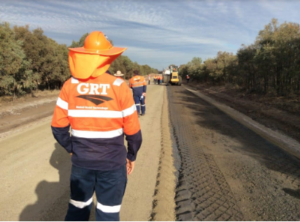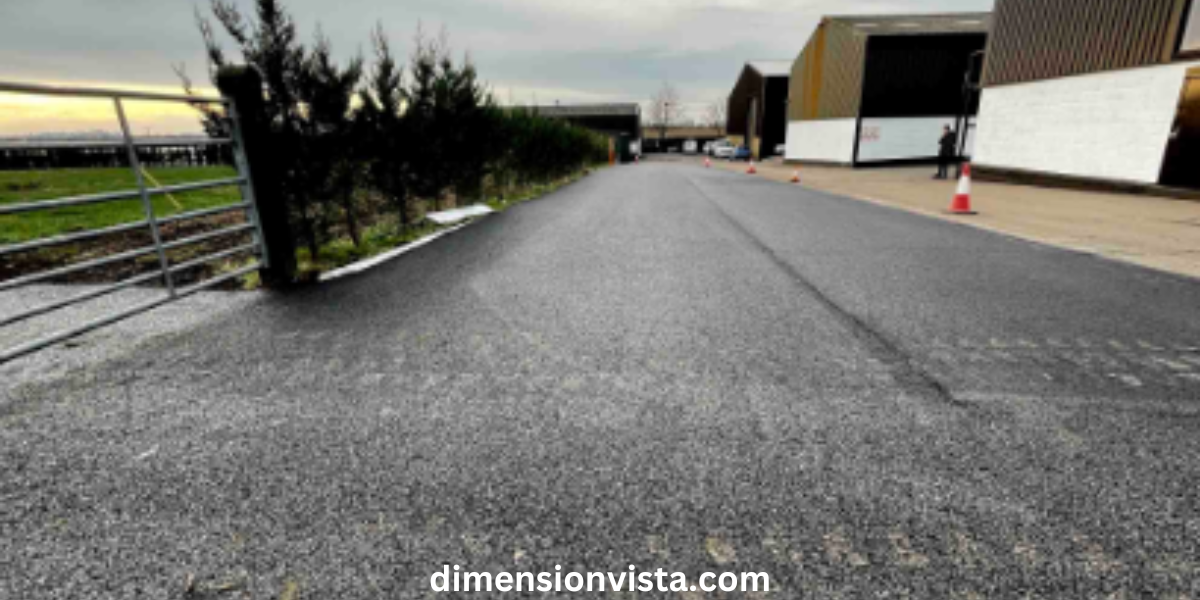Tarmac is a popular choice for driveways, roads, and parking areas due to its durability, smooth finish, and cost-effectiveness. However, like any other surface, tarmac requires regular maintenance to extend its life. span and ensure it remains in top condition. Proper maintenance not only enhances the appearance of the tarmac but also prevents costly repairs and premature deterioration.
In this guide, we’ll walk you through the best practices for maintaining your Tarmac Surface for Longevity and Durability, addressing common issues, and providing actionable tips to ensure its longevity and durability
Why Tarmac Maintenance is Important

Tarmac is exposed to various environmental and human factors that contribute to its wear and tear, including:
- Weather Conditions: Extreme heat, cold, and moisture can cause cracks and weaken the surface over time.
- Heavy Traffic: Constant vehicular movement can lead to surface stress, potholes, and general wear.
- Chemical Exposure: Oil, fuel, and other chemicals can break down the binders in tarmac, causing it to deteriorate.
- Lack of Regular Maintenance: Neglecting routine upkeep can lead to costly repairs and shorten the surface’s lifespan.
By implementing a consistent maintenance plan, you can significantly increase the durability of your tarmac surface and avoid expensive restoration work.
Best Practices for Maintaining Tarmac Surfaces
1. Regular Cleaning and Debris Removal
Dirt, leaves, and debris can accumulate on your tarmac surface, leading to drainage issues and potential damage. Follow these cleaning tips:
- Sweep the surface regularly to remove loose debris.
- Use a pressure washer occasionally to clean stubborn dirt and stains.
- Avoid using harsh chemicals that may degrade the tarmac’s binding agents.
2. Preventing and Repairing Cracks
Cracks are an inevitable part of tarmac surfaces due to expansion and contraction caused by temperature fluctuations. Here’s how to manage them:
- Inspect the surface regularly for early signs of cracks.
- Use a quality tarmac crack filler to seal small cracks before they expand.
- Apply a sealant every few years to provide an additional layer of protection against weathering.
3. Protecting Against Water Damage
Water is one of the primary causes of tarmac deterioration. To prevent water damage:
- Ensure proper drainage to prevent water pooling.
- Fill in depressions that collect water.
- Apply a waterproof sealant to protect against moisture penetration.
4. Dealing with Oil and Chemical Spills
Oil, petrol, and other chemicals can soften and weaken tarmac surfaces. Follow these steps to mitigate damage:
- Immediately clean up any spills using an absorbent material like sand or cat litter.
- Use a mild detergent and warm water to clean the affected area.
- If stains persist, consider using a tarmac-specific degreaser.
5. Resurfacing and Resealing
Over time, even well-maintained tarmac surfaces will need resurfacing to restore their durability and appearance. Consider these options:
- Resurfacing: A new layer of tarmac can be applied over the existing surface to renew its strength and look.
- Resealing: Applying a protective sealant every 3-5 years helps to prevent cracking and extends the surface’s lifespan.
6. Preventing Weed Growth
Weeds growing through cracks can accelerate tarmac deterioration. To keep them at bay:
- Apply a weed killer regularly to prevent growth.
- Fill cracks promptly to avoid weed penetration.
- Consider using a geotextile membrane beneath the tarmac during installation for added protection.
7. Managing Heavy Loads and Traffic
Excessive weight and traffic can cause indentations and cracks in tarmac. To minimize damage:
- Avoid parking heavy vehicles in the same spot for extended periods.
- Use paving grids or reinforced tarmac in high-traffic areas.
- Distribute heavy loads evenly to prevent localized stress.
8. Winter Maintenance Tips
Cold temperatures, frost, and ice can severely impact tarmac surfaces. Here’s how to protect them in winter:
- Use rock salt sparingly to avoid excessive damage to the surface.
- Shovel snow promptly to prevent ice formation.
- Avoid metal shovels, which can cause surface damage use plastic shovels instead.
Common Tarmac Issues and How to Fix Them
| Issue | Cause | Solution |
|---|---|---|
| Cracks | Weather changes, traffic load | Fill cracks with a quality filler & reseal |
| Potholes | Water infiltration, heavy loads | Patch the pothole with cold/hot mix asphalt |
| Fading Color | UV exposure, weathering | Apply a fresh layer of sealant |
| Oil Stains | Fuel and chemical spills | Use detergent or a tarmac degreaser |
| Drainage Issues | Blocked drains, poor leveling | Clear drains & ensure proper leveling |
Conclusion
Maintaining your tarmac surface doesn’t have to be complicated or expensive. By following these essential maintenance tips, you can keep your tarmac in excellent condition for years to come. Regular cleaning, crack repair, proper drainage, and protective sealants are key to ensuring its longevity and durability.
If your tarmac surface requires professional repair or resurfacing, consult a trusted tarmac specialist to get the best results. A little effort in routine maintenance today can save you significant time and money in the future.

